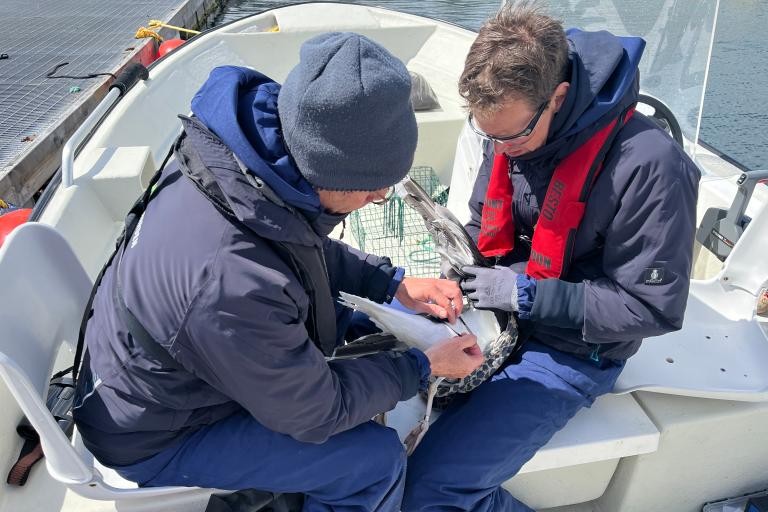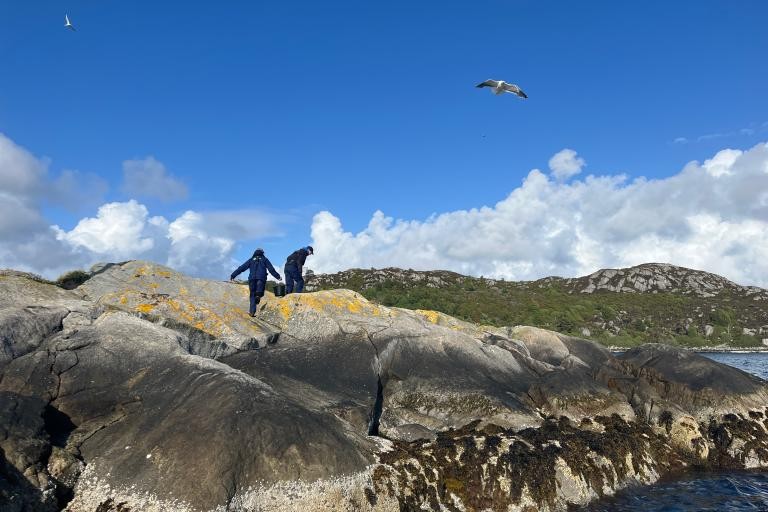GPS technology maps bird behaviour around wind farms

Thursday 6 November 2025
At the Ecowende wind farm we are fully committed to preserving and stimulating biodiversity in and around the wind farm. Once operational at the end of 2026, it will be the most ecological offshore wind farm to date. To make this possible, it is essential to understand how animals behave around the wind turbines and in general. For this reason, Waardenburg Ecology, together with Ecowende’s marine ecologist Marin van Regteren, is studying the behaviour of great black-backed gulls in and around wind farms.
Where researchers used to rely solely on ringing birds to collect data, we can now monitor them using modern GPS technology. The gulls are equipped with small GPS backpacks, giving us much more detailed insights into their behaviour.
“The backpacks are lightweight, solar-powered, and do not disturb the birds,” explains Marin. “This allows us to collect data over multiple years without affecting their behaviour or breeding success.”
To fit the birds with the trackers, Marin travelled to Bergen, Norway, this summer. “We suspected that some of the gulls flying over or close Ecowende breed on small islands off the coast,” she explains. Together with specialists from Waardenburg Ecology, the birds were carefully caught, equipped with the GPS backpacks, and immediately released.

Photo: Marine ecologist Marin van Regteren (credit: Eneco).
Interesting insights
This is now the second group of 25 birds equipped with GPS backpacks. With data from a total of 50 birds, interesting insights are already emerging. “We can see that the birds have individual personalities and preferences for where they feed. Some only feed at sea, others visit a zoo, and some forage at a landfill. Their behaviour cannot be generalized.”
Their behaviour around wind farms is also varied: “Interestingly, some birds actively use the wind farms they fly past. We also observe some birds hopping from turbine to turbine. My suspicion is that there may be good food conditions in these areas.”

Bird behaviour is not black-and-white
Marin continues: “What we also see in the flight patterns is that these birds do not show just one type of behaviour. It’s not simply a matter of avoiding or seeking out wind farms. It’s more complex and situation-dependent, which makes it very interesting.”
When the park opens in 2026, another group of great black-backed gulls will be fitted with GPS backpacks over the following two years. This will allow us to monitor the behaviour of a total of 100 gulls over several years. This data is crucial for the ecological design and management of future wind farms.
Gaining knowledge
“It’s amazing that technology now gives us so much detail,” says Marin. “And the best part is the birds are not affected at all, while we gain enormous knowledge. This helps us make wind farms more compatible with nature.”

This article was originally published (in Dutch) on Eneco’s website.
